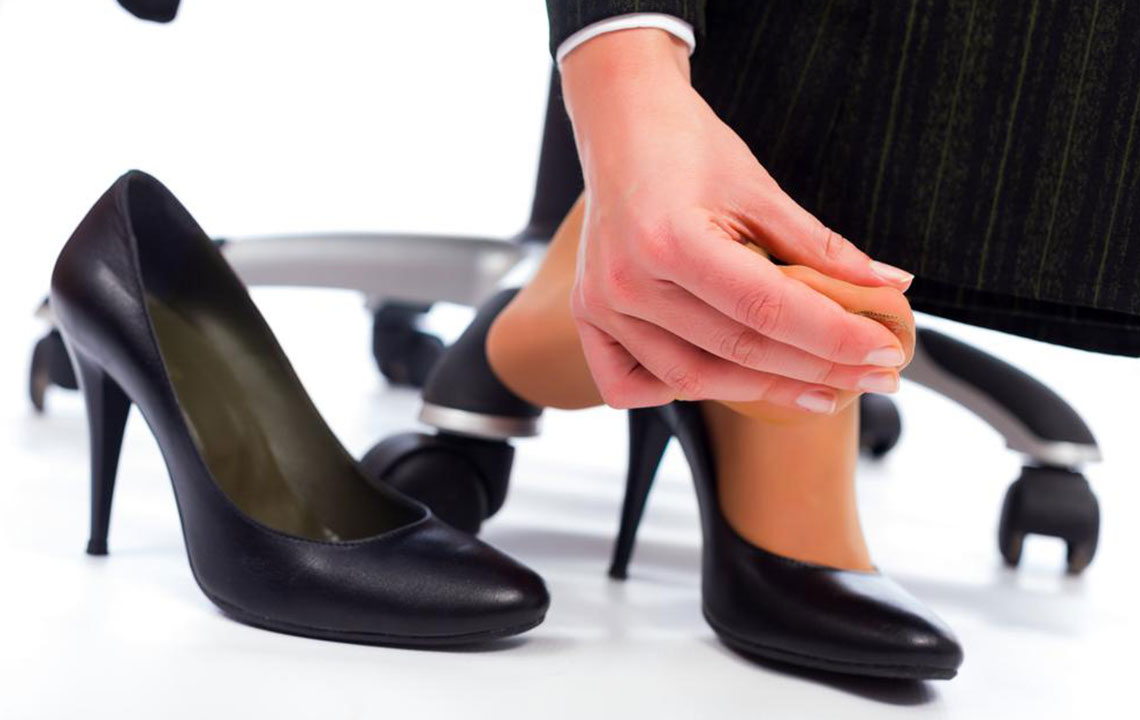5 Popular Insoles for Alleviating Pain Caused by Plantar Fasciitis

An extremely common type of heel pain, plantar fasciitis occurs when the flat band known as plantar fascia is strained. Stress on this tissue causes inflammation, weakness, and difficulty while you stand or walk. Usually, this condition is observed in individuals who are middle-aged. However, it is also common in younger people who are constantly on their feet, such as athletes or military personnel.
Causes and symptoms of plantar fasciitis
As mentioned earlier, an intense and prolonged tension can lead to tiny tears in the tissues, causing severe pain. This situation can be a result of
- Overexertion caused due to sprinting, standing, or walking for an extended period.
- Obesity which can cause pressure on the feet due to the upper body weight.
- Pregnancy, although the effects might only be witnessed in the later stages.
- Using inappropriate shoe sizes.
- Extreme pronation, i.e., the feet rolling inwards while walking.
- Having flat or high arched heels.
- Tight Achilles tendons.
The primary symptoms of plantar fasciitis include pain and stiffness on the bottom of the feet. In most cases, it only affects one foot; however, it can develop in both the feet at the same time. For some patients, the pain can be dull, whereas, for other patients, it can cause burning or stabbing sensations. Such type of pain is experienced after waking up in the morning or after resting for a long time. The discomfort doesn’t flare up when you are involved in some physical activity. However, the swelling can intensify if you overdo workouts or are constantly on the move.
Different treatments for plantar fasciitis
To alleviate the symptoms of plantar fasciitis, you can use a blend of home and medical treatments. Usually, home treatments comprise the use of cold compression, exercise, and over-the-counter (OTC) medications. Moreover, if home treatments fail, your doctor might recommend corticosteroids, prescription drugs, and physical therapy to ease the discomfort. Apart from these, you can use insoles for plantar fasciitis which can help you gain considerable relief from pain and distress. These are essential especially if you are required to be on your feet for even a few hours in a day.
Understanding the importance of using insoles for plantar fasciitis
Regular shoes usually lack support and appropriate padding to keep your feet stress free. If you have developed plantar fasciitis, then you should avoid boots, heels, or tight shoes to evade further aggravation of the condition. Instead look for comfortable shoes and high-quality insoles designed for plantar fasciitis. However, before making the final purchase, here are some of the features that you shouldn’t miss in a good insole.
- Cushioned layers – An excellent level of cushioning will avert the strain even when you have been up on your feet for hours or are striding on hard surfaces. The padded levels will also ensure stability and improved alignment of the feet.
- Great arch support – An excellent support to the arch of feet will dramatically alleviate the discomfort caused by plantar fasciitis. Initially, the arch of the insole may seem a bit too elevated, but with time, it will bring balance and comfort to your daily movements.
- Soft and deep heel cup – For efficient shock absorption, an insole should have a deep heel cup. This will lessen the pain caused by heel spurs and will allow you to walk with ease.
Popular insoles for alleviating plantar fasciitis
Here are some of the top-selling insoles for plantar fasciitis which can be used to reduce the shock and swelling. If you seem confused about picking any one of these, you can then seek your doctor’s counsel to make the right choice.
- Superfeet Green Heritage – This particular variant by Superfeet is ideal for individuals with high arches and who have a good chance of developing plantar fasciitis. Its deep heel cup facilitates a significant level of shock absorption. Made with sturdy plastic and dense foam, Green Heritage combines a fabulous combination of sturdiness and comfort. These may take time to get used to but will deliver results with consistent use.
- Airplus Plantar Fasciitis Orthotic – These insoles for plantar fasciitis are said to align your foot correctly, and they are suitable for both, athletic and everyday use. By offering incredible comfort and stability, this insole pair prevents aching and inflammation.
- Tread Labs Stride Insoles – A custom fit insole, Tread Labs Stride Insole is ideal for any foot and shoe design. Not just offering a personalized right fit, Tread Labs allows you to select from four different arch heights. Made from super-soft materials, Stride Insoles provide fantastic support and efficient pronation control. To maintain maximum hygiene, these insoles for plantar fasciitis are designed with exterior covers that can be easily disposed and replaced.
- Powerstep Pinnacle Orthodontic – Offering strong support and soft cushioning, Powerstep Pinnacle alleviates the ache and heel spur caused by plantar fasciitis and keeps the feet relaxed. These foam-based insoles for plantar fasciitis fit well in almost all types of footwears.
- Dr. Scholl’s Active Series – If you are an athlete or a fitness enthusiast suffering from plantar fasciitis, then the Active Series by Dr. Scholl can be a feasible choice. It is designed to lessen shock impacts while sprinting or playing any sorts of sports. It is quite durable and is affordably priced as well.


